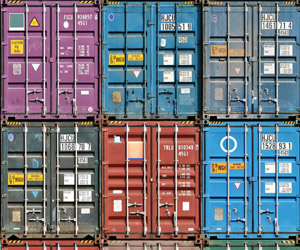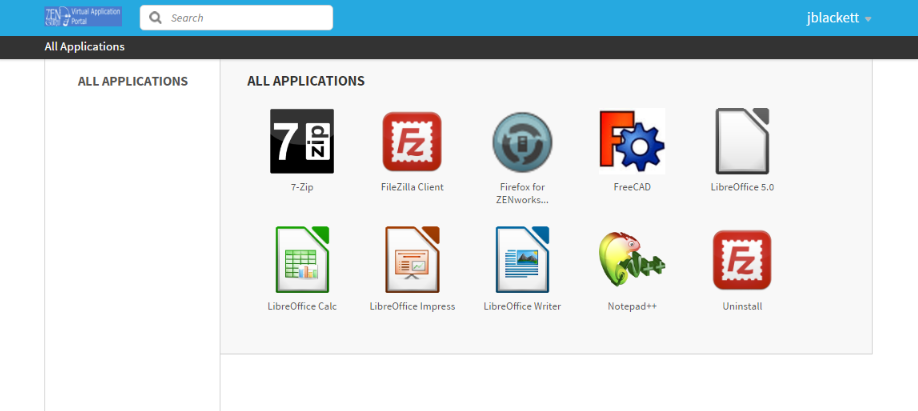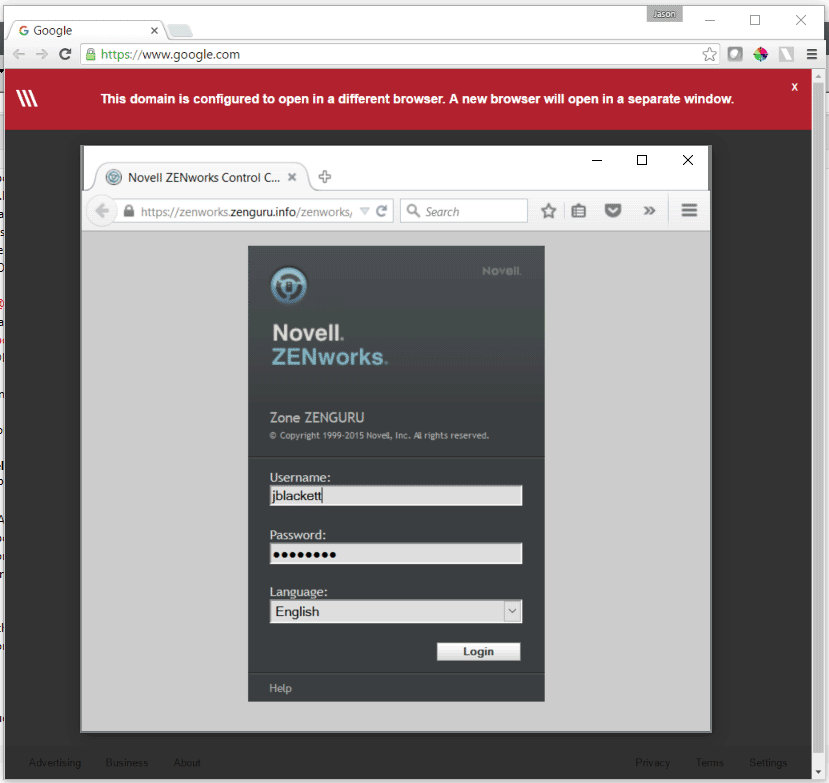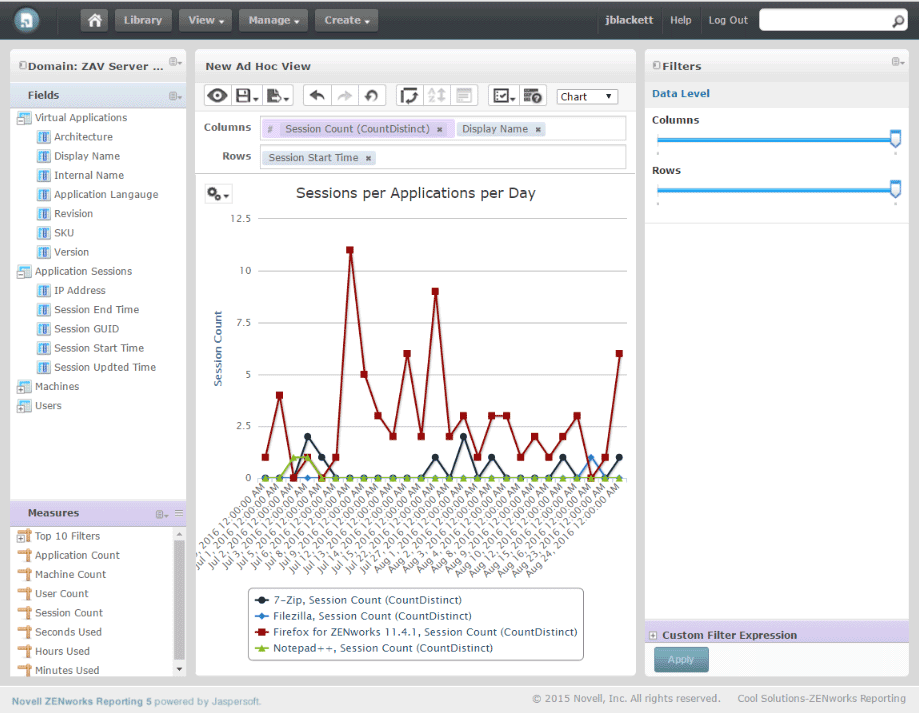Application Management has been, and continues to be, a major focus of the Micro Focus Endpoint Management portfolio. Indeed, the stated vision for the portfolio is to transform ZENworks into a Unified Endpoint Management solution with a focus on application management and user self-service in an identity driven, location aware fashion.
Micro Focus Desktop Containers and Turbo for Micro Focus Desktop Containers are new offerings built on the tried and tested technologies introduced in ZENworks Application Virtualization that make it easier than ever to overcome application hurdles that may exist in your environment and improve your overall application management.
Why do you need Micro Focus Desktop Containers?
In today’s rapidly changing world, applications, systems and IT are constantly having to adapt or die. Unfortunately, there’s a lot of older applications that aren’t keeping up, or applications that you can’t afford to keep up with. Why spend hundreds of thousands or millions of dollars to update a backend system that is working fine, just so you can use the latest and greatest browser?
Many of these legacy applications use older technologies such as older Java or NPAPI plug-ins. They may not support the current hot browsers, but they are still mission critical to your business and you need them. At the same time, the requirement of an older browser, legacy framework, and older plugin might open you up to vulnerabilities that you can’t afford. While all of the browser stuff is happening, you’ve also decided that you need to update to Windows 10 to make sure that you are supported by Microsoft in the years to come.
To pile on, you also end up with other legacy apps that require other legacy browsers and other legacy frameworks, and these browsers and frameworks conflict with the first application. This is a text book case of a problem that Micro Focus Desktop Containers can help you solve.
Building containerised applications
Micro Focus Desktop Containers is a complete solution for building, deploying, running, and reporting against containerised applications. When an application is containerised it lives inside a small virtualisation layer that is capable of virtualising registry calls, file system calls, and kernel objects such as Windows names. This makes the application ultra-portable and easily deployed.
With Micro Focus Desktop Containers the process of containerising your application is quite straightforward:
- Install the Studio application on a clean Windows machine running the Windows operating system of your choice.
- Create a snapshot using the Studio tool.
- Install the application you want to containerise.
- Create another snapshot that the Studio tool can then compare against the initial snapshot.
- Add any customisation you may want.
Publish the application as either a standalone executable, write it to a USB stick for delivery, or publish it to a software distribution solution such as the included Micro Focus Desktop Containers Server solution or ZENworks Configuration Management.
The published application now contains all of the registry and file information that the application needs to run on almost any Windows device. Users can run the application without the need to do any kind of install, and they can do so without having to worry if the application has dependencies on frameworks like .NET, Java, or Visual C++ Runtimes.
Containerised applications for end users
Because containerised applications can be built as standalone executables, you can use any means you have of getting the executable to the user. You could email the applications, put them on a network share, publish them to a USB stick, or deliver them through a software distribution solution like ZENworks Configuration Management or Microsoft System Center Configuration Manager.
With this flexibility you can integrate the deployment of applications into the user’s standard workflow. In most cases the user will never even know that the application is containerised.

Deliver applications to users outside the network
In many cases you may want to deliver applications to users that are outside your network, such as consultants, students, or interns. In these cases, you won’t be able to rely on a software distribution agent being in place, and you may want to give the recipients a user friendly means of launching the apps.
The Micro Focus Desktop Containers Server makes this easy. Within minutes you can install the Server components on a Windows server and have a simple end user portal similar to the one shown on this page.
From here the user can launch applications in a fashion similar to any other application. Additionally, if you configure desktop registration you can even have the containerised application register itself as the default handler for file extensions, and deploy Start Menu or Desktop shortcuts so that the user doesn’t have to consciously think about going to the portal every time they want to use the application.
This capability is provided by a small console application installed on the Windows device that knows how to read the assignments and pull down the application.
When using the Server as your launch platform you also have the added benefits of being able to:
- Restrict who can access the application.
- Restrict how many instances of the application can be running concurrently.
- Restrict how many users or devices can have the app.
- Expire the application after a specific number of days.
- Track who is using what applications from what device for how long.
The power of browser redirection
With Micro Focus Desktop Containers 12, it’s even easier to make sure the user is using the right containerized application to access your legacy web applications. Simply distribute the plug-in to the user and enable the browser redirector.
Once it’s installed you can use your software distribution tool or Windows group policies to deploy registry keys that will automatically instruct your locally installed Chrome or Internet Explorer browser to launch specific containerised applications when a particular host address is requested as shown in figure 2.
In this screen, a containerised version of Firefox is launched since ZENworks 11.4.2 doesn’t support management by Chrome. The user doesn’t have to remember what browser to use for each web application because the admin can define that and the system can make sure the right browser is being used.

Reporting on application usage
Micro Focus Desktop Containers also includes ZENworks Reporting. You can use ZENworks Reporting in conjunction with the Server Usage Domain available on our Cool Solutions web site to easily create ad-hoc reports like the one shown in figure 3 (over page), customised dashboards, and pixel perfect reports requested by the organisation.
Additionally, with the upcoming ZENworks Reporting 6.2.1 release you will be able to build cross domain dashboards, meaning you can create a single dashboard that cuts across multiple aspects of the Endpoint Management Portfolio.

Turbo charging Micro Focus Desktop Containers
With the release of Micro Focus Desktop Containers 12, we are also introducing the Turbo for Micro Focus Desktop Containers Subscription. This unique offering allows you to build many common applications much more quickly, secure the network access of containerised applications, and use powerful new tools for scripting the build of desktop containers.
Turbo for Micro Focus Desktop Containers includes the following capabilities:
- Turbo.net subscription access. The Turbo.net hub provides you with access to hundreds of applications and thousands of versions of the most commonly used free and open source software. This includes all of the standard browsers, frameworks like Java and .NET, and much more. With an easy-to-use, docker-like command line interface you can easily mix and match these different components to build containerized applications in minutes.
- IP Blocking. One of the problems with containerising legacy applications is that they usually have known vulnerabilities. Turbo for Micro Focus Desktop Containers enables IP blocking capabilities that allow you to restrict the IP addresses, DNS hosts, DNS domain, and IP subnets that can accessed by a virtual application. This means that you lock the legacy application down to accessing only the sites you know are required by your business use case, and that have been deemed safe for use by the application.
- Per App Proxy Support. To further improve security, you can also configure a virtual application to send all of its network traffic through an HTTP or SOCKS proxy. This can be used to help ensure the security of the connection between the application and your backend application.
- Clean container packaging. Historically the way you’ve had to package most applications is through the snapshot and compare process. With Turbo you have a new option, which is to simply start up a clean container that acts like the clean machine you are used to packaging on. From inside the container you can install the application you want to containerize and then simply commit the changes to a containerised application. With the Turbo.net hub you can also easily inject .NET, Java, and other runtimes and frameworks required into the clean container prior to packaging your application.
- Scripting. Because Turbo includes the turbo command line tool, TurboShell, TurboScript, and access to a plug-in for the Jenkins continuous integration platform, you can build scripts to automate the builds of applications.
For instance, you may have an application that is being developed in-house and you want to automatically turn it into a containerised application with each release. With the scripting capabilities of Turbo for Micro Focus Desktop Containers you can build powerful scripts that will do this with minimal effort.
Also as a Turbo.net user you have access to the GIT Hub. The GIT Hub includes the scripts used to build the applications in the hub, which offers plenty of examples of how to build TurboScript.
The Turbo for Micro Focus Desktop Containers Subscription is a must for serious Micro Focus Desktop Containers users. It will help you reduce your time to value, improve your packaging capabilities, and help you create a more secure system.
Packaging and Licensing
Micro Focus Desktop Containers is available either as a standalone product called Micro Focus Desktop Containers Professional or as part of the ZENworks Suite. The Turbo for Micro Focus Desktop Containers product is available as a subscription that can be added on to either the Professional version or the ZENworks Suite.
If you are an existing ZENworks Application Virtualization customer with active maintenance you already have access to the Micro Focus Desktop Containers product as it is an upgrade entitlement provided as part of your maintenance.
As with other products in the portfolio both Micro Focus Desktop Containers and Turbo for Micro Focus Desktop containers can be licensed either per device or per user.
Any user or device that executes applications requires a license. When purchasing Turbo subscriptions, you must purchase the same number of subscriptions as you have licenses for Micro Focus Desktop Containers or the Suite.
Summary
Using Micro Focus Desktop Containers, and the unique capabilities found in Turbo for Micro Focus Desktop Containers, it is now easier than ever to package and deploy applications in a simple and secure manner.
If you haven’t had an opportunity to try out these fantastic solutions, get the evaluation today and see how fast it can help solve your application problems. www.microfocus.com/products/zenworks/desktop-containers
This article was first published in OHM35, 2016/4, p21-24.

